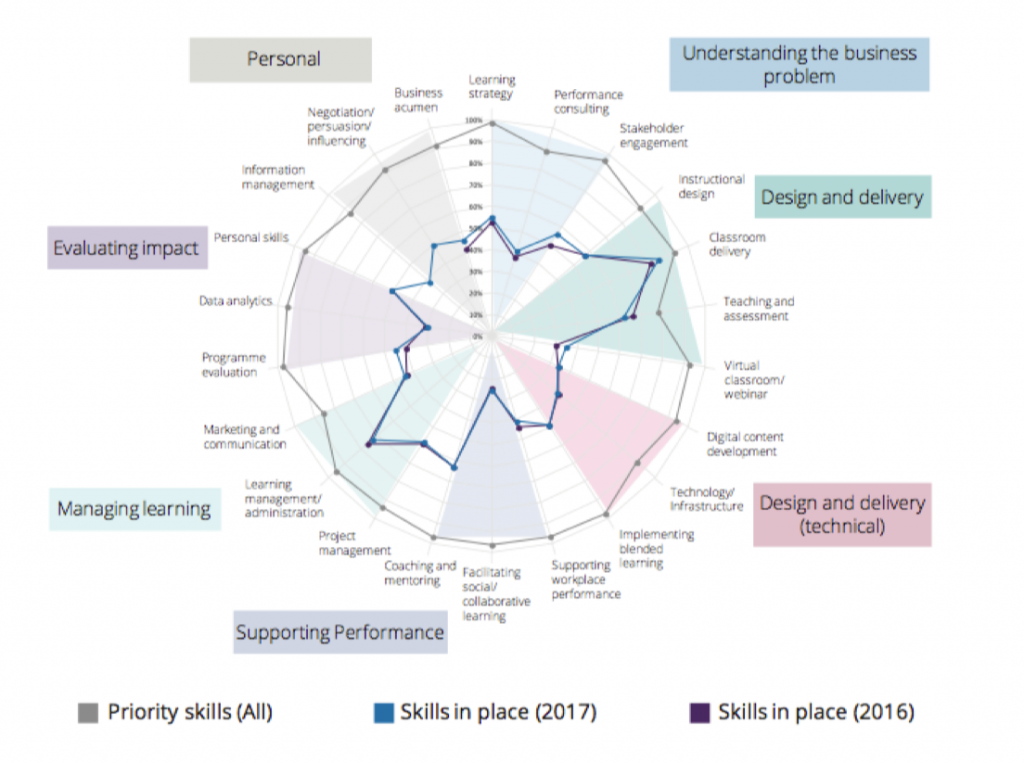Want it, expect it but can’t do it. That seems to be the message from the latest TM benchmark data launched this week. For anyone who tracks the benchmark this will come as no surprise. The problem is that there are some persistent, potentially insurmountable, challenges that don’t seem to go away.
We know this because the benchmark is a longitudinal research study which it means it tracks the same data points year after year and has now been doing so for 13 years.
However you want to frame the data, it once again paints a worrying picture.
Take blended learning. Only 23% of L&D professionals offer a blend of face-to-face and online learning. But 78% are looking to increase this in the next two years. OK, but why in 2017 is this figure so low? The same question can be leveled at formal learning. Currently only 22% of formal learning is wholly online but 72% are looking to increase this in the next two years.
So what’s causing this persistent inaction? One reason might be the lack of relevant skills. Look at the skills map below and you can see three things that might serve as an explanation. First, that face to face training skills are a strength. Second, that most other skills, from digital learning design to evaluating impact, remain a challenge. And third, very little progress has been made in developing the skills that are required by organisations.
Why has so little progress been made on the skills agenda? That’s a question heads of L&D and the professional bodies need to mull over. Are we letting L&D professionals down by not accelerating skills development in the skills we know businesses need? And what about personal accountability for developing digital skills – are L&D professionals doing all they can to build their knowledge and skills?
The benchmark shows there is no lack of ambition to achieve amazing things with learning technologies, so ambition isn’t the problem. So why isn’t there a bigger impact? The problem isn’t isolated to skills. The data shows that cost is the number one challenge to successful use of learning tech. Interestingly, L&D says the number two challenge is a lack of skills amongst employees to manage their own learning. Am I reading this right? L&D professionals say they don’t have the right skills to make a success of learning technologies and they think employees don’t have the skills to successfully use learning technologies. I make it that there is a huge digital skills challenge in organisations. Or am I missing something?
It is easy to pull out a few data points to make a point but there is good reason to make this point about digital skills. Many of the technologies we are talking about here are mature at 10-plus years old and more. Take into account the lag time from new technology launch to wider acceptance into the market and you would still expect L&D to be comfortable using these technologies. But that isn’t the case. It would seem there are some deep-rooted barriers here which can’t be explained away by blaming employees’ ability to use technology because they are using technology – they use it all the time outside of work.
So what’s the answer here? It is for all L&D professionals to learn about technology. Learn about its application and use it and explore what it can do for you, your team and organisation. The key here is to make yourself accountable to do this. As we are fast approaching 2018 then maybe this should be your New Year’s resolution.
- Read the latest Towards Maturity Benchmark report here.





